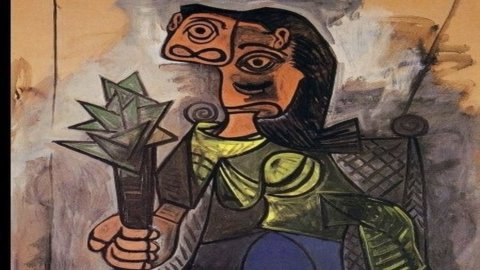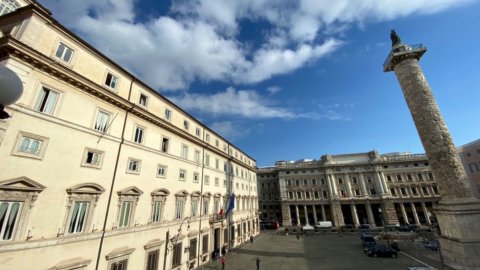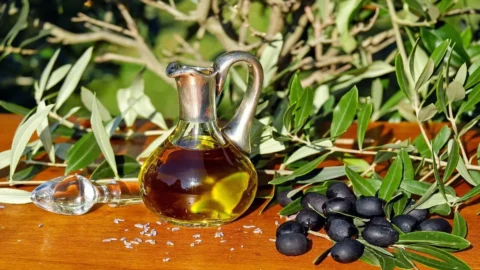He was the star of the show Festivals that were held throughout Italy in April. Celebrated in Albenga, in Liguria, where they go crazy for the thorny quality of Sardinian origin; in Veneto in Chioggia where it is known for its earliness, multi-celebrated in Tuscany, for over 50 years in Riotorto, a fraction of Piombino; in Chiusure, a fraction of Asciano in the province of Siena and in Montecatini terme in the province of Pistoia where it was served fried; in Emilia Romagna in Brisighella, home of the famous "Moretto"; in Lazio, in Sezze, in the province of Latina, whose first fair dates back to over 50 years ago, capable of attracting forty thousand people for the occasion, and then also in Cerveteri and Ladispoli.
And still in his honor demonstrations were held in the Marches in the Filetto fraction of Senigallia for thirty years now; in Abruzzo in Cupello in the province of Chieti; in Puglia in Trinitapoli; in Campania in Salerno, Auletta and Pertosa who have deservedly kept alive the tradition of a white variety in danger of extinction; in Sicily, in Cerda in the province of Palermo, where an 8 meter high monument has been dedicated to him in the town square, in Niscemi in the province of Caltanissetta and in Ramacca in the province of Catania where the quality Violetta is produced and venerated, and finally in Sardinia where it was celebrated in Uri in the province of Sassari and in Masainas in the province of Iglesias.
It was understood at this point that we are talking about His Majesty the Artichoke, a vegetable present at all latitudes in our cuisine how precious for our health of which theItaly is proudly the first producer in the world.
The Pandemia has taken the stage away from him for a year. In Italy there are countless festivals and festivals dedicated to it beyond the most important that we have listed above, because historically they represented the passionate gathering of all together to say goodbye to winter and greet the new season.
But the strict anti-Covid government rules have forced municipal administrations, organizers, growers, and enthusiasts to postpone all appointments to next year, when, hopefully, we will have definitively come out of the emergency and we will be able to find ourselves in the square to celebrate this humble vegetable like a King.
Because even if incredibly "artichoke" has been used as an insulting synonym that denotes stupidity or simplicity ("Referring to a person, silly, stupid, or clumsy, incompetent, clumsy", says the Treccani dictionary), the artichoke can boast a long history of great respect.
Already appreciated first by the Greeks and then by the Romans, it developed essentially in Sicily but its real triumph exploded in the mid-400th century when it was requested on the tables of the Tuscan nobility and above all when it was brought to France by Catherine de' Medici married King Henry II of France who loved to feast on artichoke hearts considering it a powerful aphrodisiac. And the artichoke also brightened up the table King Louis XIV, great consumer, and even of Henry VIII in England who had them grown in his personal garden.
Over time the artichoke also became a constant presence in the works of great artists of the past, carved in the capitals of the cathedral of Chartres, the protagonist of sixteenth-seventeenth-century still lifes, from Vincenzo Campi to Giuseppe Arcimboldo, who used it for the Portrait of Rudolf II, of the Flemish painter Clara Peeters of the Spanish Blas de Ledesma, of the Baroque miniaturist Giovanna Garzoni up to Filippo De Pisis and a portrait of Woman with artichoke, by Pablo Picasso.
Other than a humble plant for fools!
But beyond his noble acquaintances perhaps the most extravagant and admired definition is that provided by Syrian writer Farouk Mardam-Bey, Bibliothécaire à l'Institut national des langues et civilizations orientales, in his beautiful book "Ziryab's cuisine, 83 recipes for a practical initiation to Arab gastronomy, an original cookbook that highlights the cultural mix of which Islam it was the most active agent in the Mediterranean over the course of at least ten centuries.
Mardam-Bey attributes a softly sensual and sinful atmosphere to the artichoke: “The artichoke is the most mysterious of vegetables. And also the most feminine, and undoubtedly one thing explains the other. While male vegetables, such as cucumber, asparagus or leek, do not hesitate to show off their arrogant virility to the four winds, the artichoke, on the contrary, out of innate modesty, if not out of coquetry, does everything to hide one's intimacy under petticoats and lace, folds and drapery. To access it, lovers of him must first remove all these frills from him, one by one, delicately, slowly. taking the necessary time. Then the artichoke offers them its fleshy heart, that part that the French, in less prudish times, did not call as now "fond", but very appropriately designated, due to the silky consistency and rounded shape, with the word "cut". .
And in France for a long time the artichoke was considered inappropriate for girls of good families to eat in public. The reason? Evidently the memory of Caterina de' Medici: Cynara scolymus, which in the XNUMXth century had crossed the Alps from Italy "was considered, like other plants unknown until then, such as the tomato, a powerful aphrodisiac" and this would have could denote unmentionable cravings. Vice versa for men it was preparatory to nights of great vigor…
If today its aphrodisiac characteristics have gone into the background, vice versa its beneficial properties are re-evaluated day after day by nutraceuticals.
If everyone has known the benefits of the artichoke on our liver since time immemorial (those who have white hair will surely remember one of the advertisements of "Carousel" that made history, that ofactor Ernesto Calindri sipping a Cynar sitting at a table in the midst of the chaotic Milanese traffic, proposing it "against the wear and tear of modern life"), other effects of great significance have been discovered by science.
Li highlights the site of Humanitas Medical Care: “The artichokeo promotes the proper functioning of the intestine and limits the risk of colon cancer thanks to its high fiber content. The latter, together with cinerine and lactone sesquiterpenes, also contribute to reduce blood cholesterol levels. The artichoke also contains molecules characterized by antioxidant properties that help defend the body from the action of free radicals and group B vitamins, essential for the proper functioning of the metabolism.
Specifically, vitamin B9 (provided by this vegetable in the form of folate) promotes the correct development of the nervous system in the early stages of pregnancy. While the Vitamin K helps bone and brain health, potassium defends cardiovascular health, copper and iron are important for the production of red blood cells”.
If you then want to photograph the healthy composition of the components of this precious vegetable, you are faced with a mine of well-being: Specifically, one hundred grams of raw artichokes contain: 11,7 mg of vitamin C, 84,94 g of water, 0,19. Vitamin E 5,4 mg, Fiber 1,046 g, Niacin 0,49 mg, Zinc 0,338 mg, Pantothenic acid 0,116 mg, Pyridoxine 3,27 mg, Protein 0,15 g, Fat 10,51 g, 0,072 g carbohydrates, 0,066 mg thiamine, 13 mg riboflavin, 0,256 IU vitamin A, 0,231 mg manganese, 0,2 mg copper, 60 µg selenium, 44 mg magnesium, 1,28 mg calcium, 68 mg iron, 14,8 µg folate, 370 µg vitamin K, 94 mg potassium, 90 mg sodium, XNUMX mg phosphorus.
In Italy, as we have seen, they are grown at all latitudes and there are all varieties. But despite the extensive use of the artichoke in cooking, medicine and cosmetics, a group of varieties has been protected by Slow Food, they have become part of the Presidia because their cultivation, not commercially productive, was significantly decreasing. And they are the Asti artichoke of Sorì, the white artichoke of Pertosa, the artichoke of Montelupone, the artichoke of Perinaldo, the artichoke of Pietrelcina, the thorny artichoke of Menfi, the violet artichoke of Castellammare, the violet artichoke of San Luca, the artichoke violet of Sant'Erasmo and the hunchbacked thistle of Nizza Monferrato.
Talking about the versatility of artichokes in the kitchen is like opening an encyclopedia: they can be eaten raw, in salads, boiled with the addition of lemon or cooked in a million ways, stewed, fried in batter, alla Romana, au gratin, alla giudia, sautéed, stuffed in the oven, they can give soul and flavor to an infinite number of dishes such as pasta, risotto, lasagna, rustic pies, omelettes, flans, soups, they can be excellent side dishes for meat and fish dishes, they can be bases for soups or paté, they can be preserved in oil as a garnish for dishes for the text of the year.
Above all, as they do in Campania and Sicily, they can be cooked directly on the grill, flooding all around with an inebriating scent of nature which is difficult to resist.
And finally, if we want to end this elegy of the artichoke on a high note, it is good to remember that one of the most beautiful actresses in the history of cinema, the unforgotten and unforgettable sex symbol of an era, Marilyn Monroe, crossed her life as a star with the artichoke world: it was in 1949 when she was elected first “Queen of Artichoke” (Artichoke Queen) at the "Artichoke Festival" (Artichoke Festival) which is celebrated every year in Castroville, California.
From the Greeks, to Caterina de' Medici, to Henry VIII to Marilyn Monroe, no fruit or vegetable has been able to go through history like His Majesty the Artichoke.





